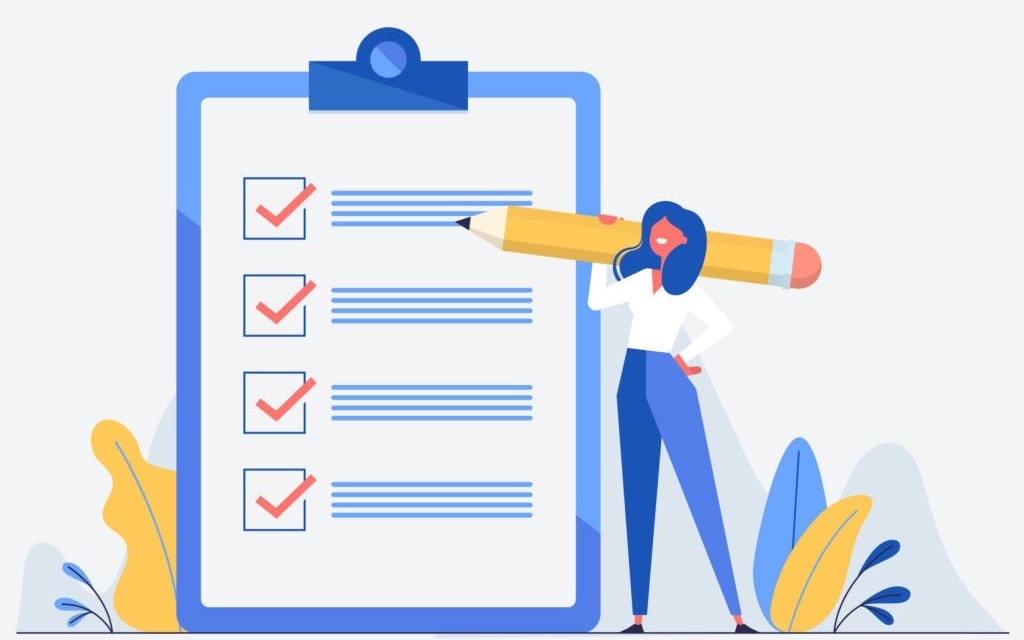Professional SEO training and advanced SEO checklist
Professional SEO training requires background that you should study and learn before starting. First, you need to know that SEO is divided into three parts: internal SEO, external SEO, and technical SEO, and each field alone has many tips. Initially, you must familiarize yourself with two important SEO tools. Google Analytics and Tag Manager are two important SEO tools that Google introduced, and we will need them to start SEO work. Continuing the professional SEO training, we will examine these two types of SEO.
Internal SEO and external SEO checklists
Professional SEO training for internal SEO requires that we first examine keywords. Researching keywords is one of the most important steps in internal SEO. To get started, it is better to use keywords and phrases with less competition. Be careful that using keywords in URLs can help your ranking, but be careful that using long URLs will harm your site.
Professional SEO training for foreign SEO also creates such a thing. Let’s examine the following:
1. Using tools such as Ahrefs for site analysis:
Ahrefs will check the strength of your site and the sites that have been linked to you. It will also examine the amount of spam on your site, your business competitors, how to use anchor texts, etc.
2. Checking the links of competing sites:
One of the easiest ways to build links is to understand competitors’ sites’ text and anchor text. Linking to resources on competitors’ sites can also help you choose a suitable strategy and start building links.
How to use keywords in the text for professional SEO training
1. Using the keyword in the page title
The correct use of keywords in the text can determine your site’s rank and position. If you use keywords correctly and write attractive text, your CTR or click rate will increase, increasing your site’s clicks.
2. Using the keyword in the meta description of the site
Meta descriptions alone do not affect your site’s SEO and cannot help you. However, an attractive meta description can attract users to your site, which is very positive from Google’s point of view.
3. Using keywords in header tags
Each page only needs the h1 tag once. The title of your site is placed in this tag.
4. Using the keyword in the text
Be careful to use keywords in the text. The minimum number of words you should use in a text is 300, and an ideal amount is 700. But be careful to avoid unnecessary writing that increases the number of words.
5. Using the ALT tag
ALT tag, also known as alt text. It makes Google understand the photo you have used. Also, when Google achieves this recognition based on your text, it will display your photo and page to the user. Be careful that using unique photos and images will increase your site’s ranking.
6. Linking to other pages:
The text you use for linking is one of the most important texts from Google’s point of view. In fact, by doing this, you inform Google which keywords to display your site to the user.
SEO checklist for technical SEO
We should also examine technical SEO and useful tools in professional SEO training.
1. Using Google Search Console
Google Search Console is an SEO tool provided by Google, and it is free to use. This tool can examine your entire site and provide useful information.
2. Solving the problem of broken links and crawling problems:
Broken links and errors like this are often found on very large sites. Broken links will prevent Google from crawling your site, reducing traffic.
3. Checking the loading speed of the site
For professional SEO training, we should know that site loading speed is one of the most important factors from Google’s point of view. Tools like wp-rocket can increase the speed of your WordPress site. GTmetrix tool can check the speed status of your site.
4. Responsive site
Many users nowadays use mobile phones to visit websites. Responsiveness ensures that the appearance of your site on devices such as phones, etc., does not get confused and messy.
5. Using the sitemap
In professional SEO training, we must also learn how to make a sitemap and register it in Serp Console. The sitemap makes it easy for Google to index your site.
6. Using the robot file
The last issue we will mention in the technical section of professional SEO training is creating the robot file. In this file, you can specify which pages of your site you allow Google to index.
Using Google Tag Manager and Google Analytics
There are tools that you will need for professional SEO training. In the following, we will introduce and review two important tools in the field of SEO:
1. Google Analytics:
It is one of the most professional tools to manage your website. This tool can provide you with correct statistics by managing your website. This tool is one of the essential SEO tools you should use to check incoming site traffic. This tool also provides information about the user’s exit rate from the website, the analysis of the created campaigns, the user’s behavior with the site, etc.
2. Google tag manager
Another tool introduced by Google is the Google Tag Manager tool, which you will need for professional SEO training. Next, we will examine the benefits of this tool:
- Speeding up your operations is the first advantage of this tool because you no longer have to enter the list of code pages to add each tag.
- Another advantage of this tool is the comfort of digital life. It may be difficult for us to implement some tags due to our lack of familiarity with coding.
- Another advantage of this tool is that it ensures that the site is up and running. The tag manager prevents this by preventing it whenever a tag disrupts your site.

